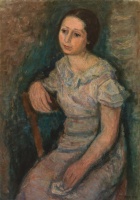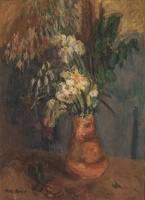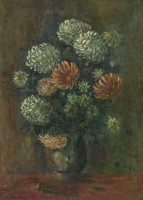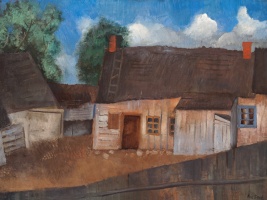
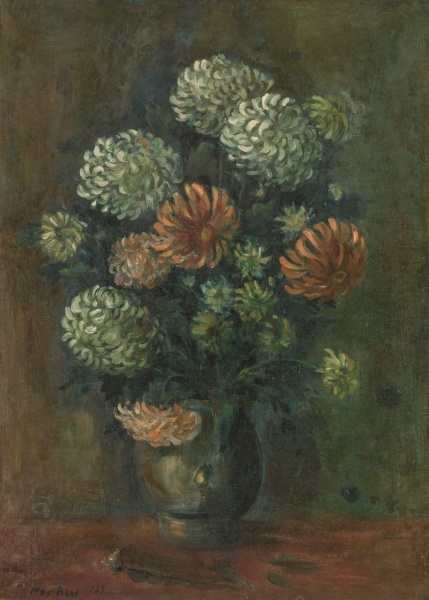

Chrysanthemums
| Author: |
Max Band (1900–1974)  |
| Created: | 1933 |
| Material: | canvas |
| Technique: | oil |
| Dimensions: | 73 × 54 cm |
| Signature: | bottom left: Max Band 1933 |
French Expressionism and the École de Paris. In the early 20th century, every young person starting out on a career as an artist dreamt of going to Paris and becoming famous. The large group of Litvaks who migrated there formed the nucleus of the École de Paris. Litvak artists brought Yiddish culture and the shtetl world-view to Paris, which combined with the modern art trends of the time (Post-Impressionism, Cubism, Futurism and Fauvism) and formed a new trend, French Expressionism. This trend was popular between 1915 and 1940, and about 60 Litvaks and more than 150 Jewish painters from all over Europe were adherents of the Paris school.
French Expressionism brought fresh ideas, new motifs and artistic discoveries to art. The trend is characterised by elegance and restrained expression, flat forms, vibrant brushstrokes, light colours, and nuanced painting. The artists were interested in the life around them: views of the city and its squares, people enjoying themselves in cafés, the hustle and bustle of a market, and the razzle-dazzle of carousels and the circus. They painted portraits of their wives and children, streetwalkers and female nudes in studios, apples on windowsills, and flowers in vases.
Text author Vilma Gradinskaitė
Source: Law firm Valiunas Ellex art album OBJECTS ON SHOW (2017). Compiler and author Giedrė Jankevičiūtė, STORIES OF LITVAK ART (2023). Compiler and author Vilma Gradinskaitė






